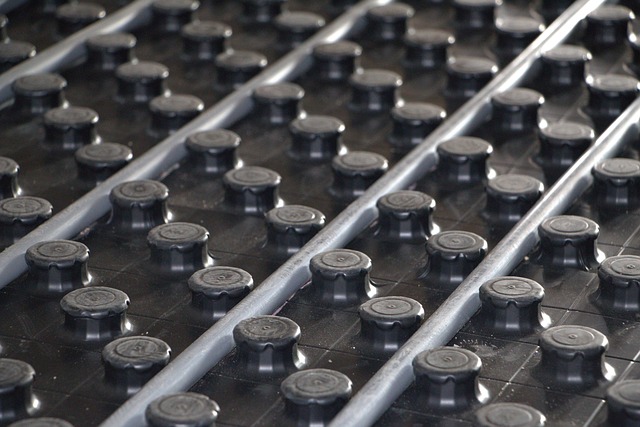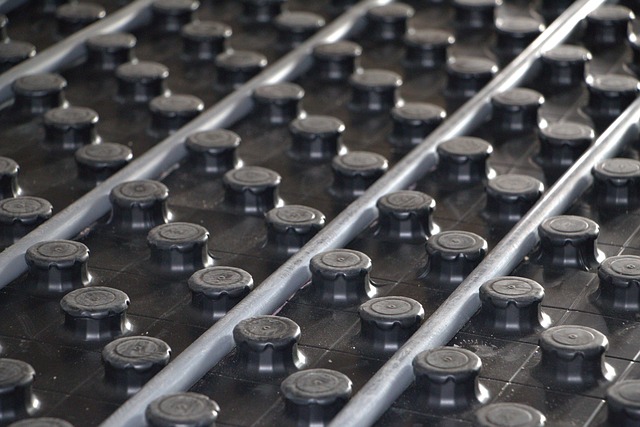Multi-stage unit heaters provide advanced temperature control solutions with precise BTU capacity adjustments, ideal for large industrial spaces and commercial settings. These versatile devices offer adaptable heating options via suspended, ceiling-mounted, gas-fired, electric, or forced air models, catering to diverse temperature needs while enhancing energy efficiency and productivity. Selecting the right unit heaters based on space size, occupancy, and environmental conditions ensures optimal comfort and safety standards in industrial and commercial environments throughout the year.
“Discover the power of precise temperature control with multi-stage unit heaters. This comprehensive guide explores their role in industrial processes, offering benefits like enhanced accuracy and efficiency. From understanding these heaters’ inner workings to designing tailored systems, we delve into key considerations. Explore real-world applications across diverse industries, showcasing successful implementations. Optimize your operations with this essential resource on multi-stage unit heaters.”
- Understanding Multi-Stage Unit Heaters: A Comprehensive Overview
- The Role of Precision Temperature Control in Industrial Processes
- Benefits of Using Multi-Stage Heaters for Accurate Temperature Management
- Designing a Multi-Stage Heating System: Key Considerations
- Case Studies: Successful Implementation of Unit Heaters in Diverse Industries
Understanding Multi-Stage Unit Heaters: A Comprehensive Overview

Multi-stage unit heaters are advanced heating solutions designed for precise temperature control in various settings. These versatile devices operate by cycling through multiple stages of heat production, allowing for gradual and accurate adjustments to meet specific requirements. Each stage utilizes different heating elements or fuel sources, enabling a wide range of temperature outputs. For instance, gas fired units can offer efficient heating with adjustable BTU capacity, while electric heaters provide precise control for precise applications like warehouse or industrial space heating.
Suspended heaters and ceiling-mounted models are popular choices for commercial heating due to their ability to distribute warm air evenly through forced air heating systems. This technology is particularly beneficial in large industrial spaces where maintaining a consistent temperature is crucial for operations. By employing multi-stage unit heaters, businesses can ensure optimal comfort and efficiency, enhancing productivity without compromising on energy consumption.
The Role of Precision Temperature Control in Industrial Processes

Precision temperature control plays a pivotal role in various industrial processes, ensuring optimal efficiency and product quality. In manufacturing units, for instance, maintaining consistent temperatures is essential for chemical reactions, material processing, and assembly line operations. Unit heaters, like suspended heaters or gas fired units, equipped with advanced control mechanisms, offer precise BTU capacity adjustments to meet these demands. Electric heaters too are gaining traction in commercial heating solutions, providing efficient forced air heating tailored to specific industrial spaces, including warehouses.
Ceiling-mounted heating systems, a popular choice for large industrial spaces, leverage precision temperature control to create comfortable and productive environments. This is particularly crucial during winter months when maintaining suitable temperatures in vast warehouse applications becomes a challenge. By adjusting heat output precisely, these multi-stage unit heaters enable businesses to optimize energy usage, reducing operational costs while adhering to safety standards and enhancing overall productivity in commercial heating scenarios.
Benefits of Using Multi-Stage Heaters for Accurate Temperature Management

Multi-stage unit heaters offer a range of benefits for precise temperature control in various settings. These advanced heating systems are designed to provide consistent and accurate heat distribution, making them ideal for demanding applications where maintaining specific temperature levels is crucial. By incorporating multiple stages of heating, these units can efficiently adjust to changing environmental conditions, ensuring optimal comfort or process requirements.
One significant advantage is their versatility, catering to a wide spectrum of needs, from warehouse applications and commercial heating to industrial spaces. Whether ceiling-mounted or suspended heaters, gas fired units, electric heaters, or forced air heating systems, multi-stage unit heaters are engineered to deliver precise control with adjustable BTU capacity. This adaptability makes them suitable for diverse environments, allowing businesses to maintain ideal temperatures year-round, enhancing productivity and energy efficiency.
Designing a Multi-Stage Heating System: Key Considerations

Designing a multi-stage heating system requires careful consideration to ensure precise temperature control in various settings, especially in industrial spaces like warehouses and commercial facilities. The key lies in selecting the right unit heaters that can adapt to different environmental conditions. For instance, gas fired units offer efficient heating, while electric heaters provide precise control, ideal for specific zones within a large warehouse application.
When designing, it’s crucial to factor in BTU capacity, ensuring sufficient heating power to match the space’s size and occupancy. Forced air heating, with its ceiling-mounted suspended heaters, can quickly distribute warmth throughout vast industrial spaces. Moreover, the system should be adaptable, allowing for easy adjustments to meet changing temperature needs, making it a versatile solution for diverse commercial heating requirements.
Case Studies: Successful Implementation of Unit Heaters in Diverse Industries

Unit heaters have proven their versatility and reliability in a multitude of industries, offering precise temperature control tailored to specific needs. Case studies illustrate successful implementations across diverse sectors. For instance, in warehouse applications, forced air heating systems featuring gas fired units or electric heaters are strategically placed for even distribution, ensuring optimal conditions for inventory storage. These systems are often ceiling mounted, leveraging the vast space above industrial spaces to maximize efficiency and minimize floor obstruction.
Another notable example is their integration into commercial heating solutions. Suspended heaters, with varying BTU capacities, have revolutionized indoor environments in office buildings and retail spaces, providing both comfort and energy-efficiency. This adaptability showcases the unit heater’s potential to cater to a wide range of requirements, making them indispensable tools for maintaining comfortable and productive industrial and commercial spaces alike.
Multi-stage unit heaters play a pivotal role in modern industrial processes, offering precise temperature control and enhancing efficiency. By understanding their operation and benefits, businesses can optimize heating systems for various applications. This article has explored the significance of accurate temperature management, the advantages of multi-stage heaters, and key design considerations. Through real-world case studies, it’s evident that these heaters are versatile game-changers, revolutionizing operations across diverse industries, from manufacturing to chemical processing. Embracing multi-stage unit heaters can lead to improved product quality, energy savings, and enhanced overall process performance.
